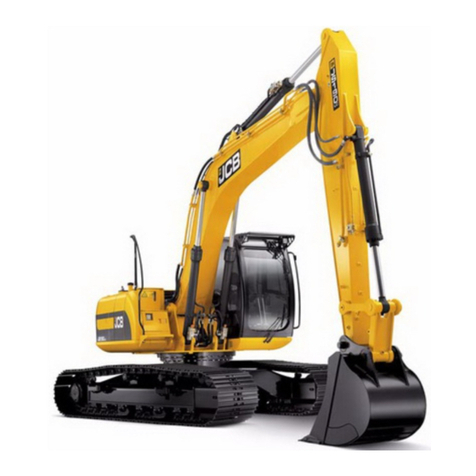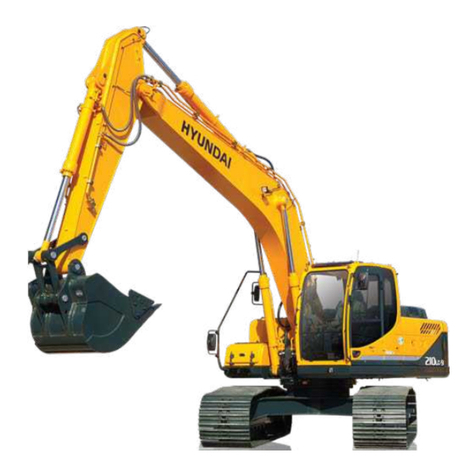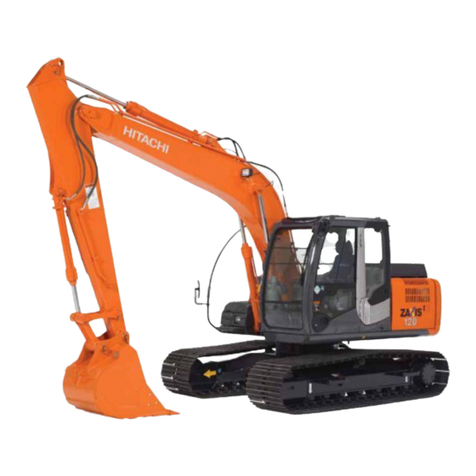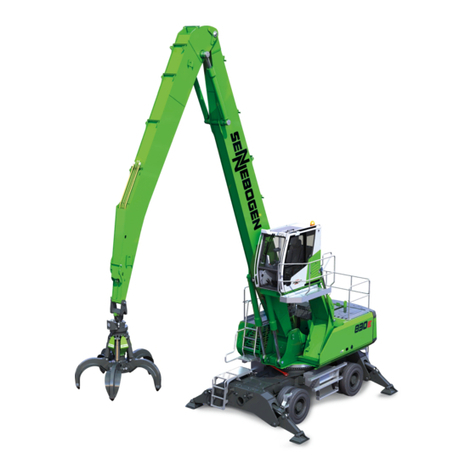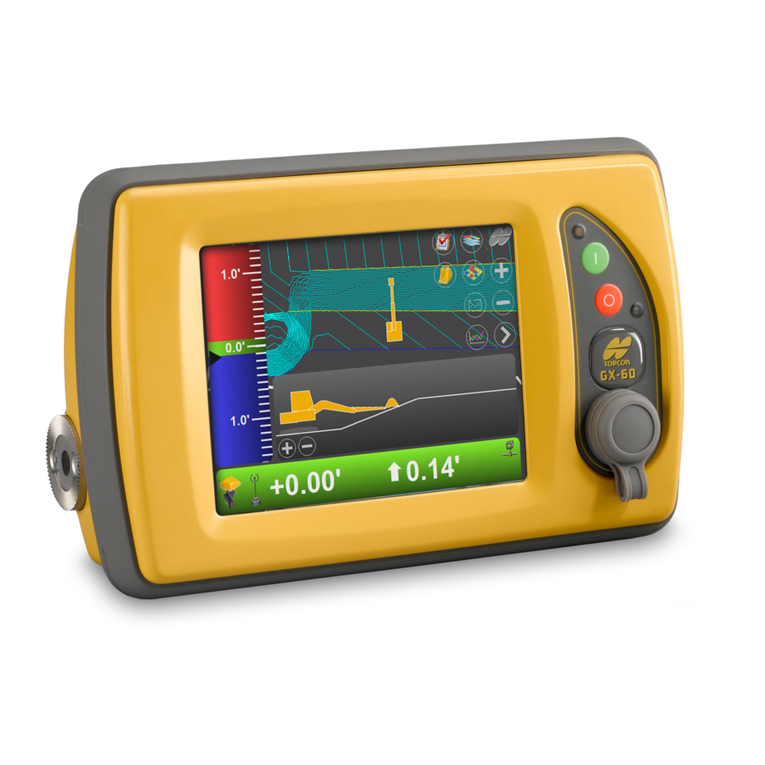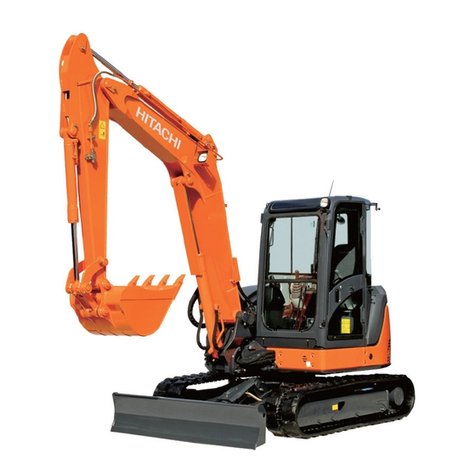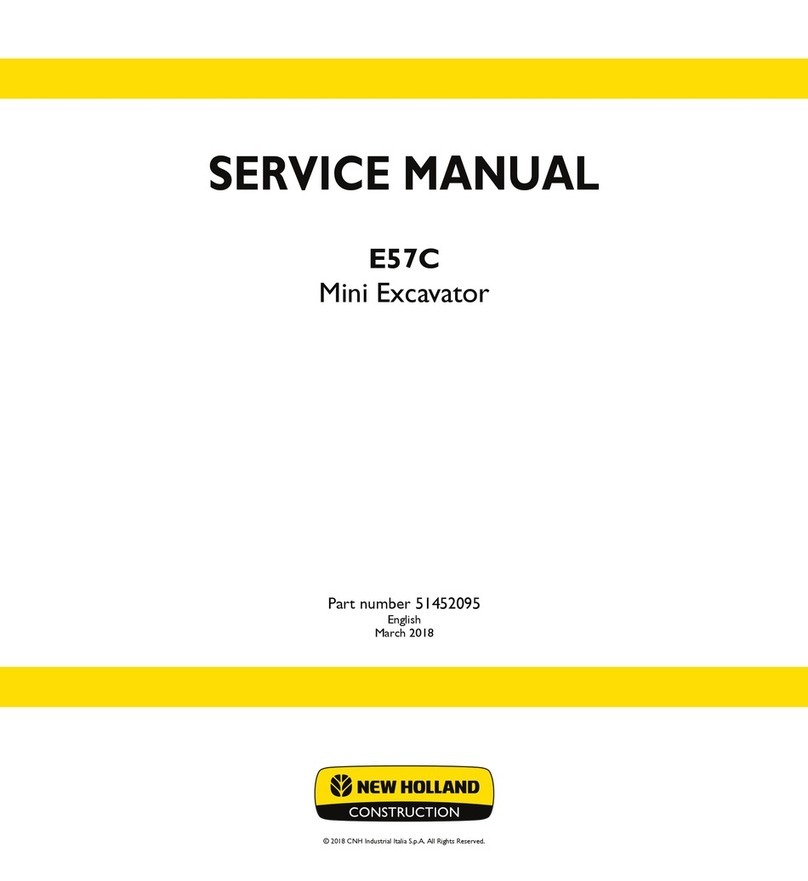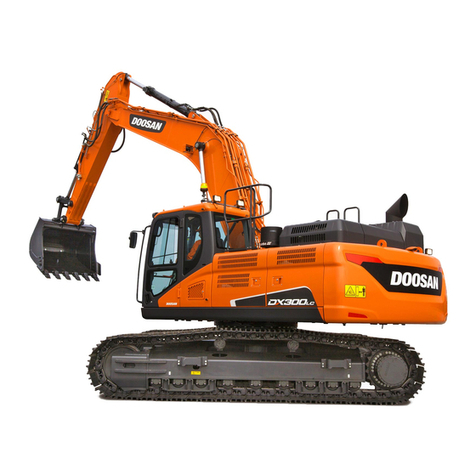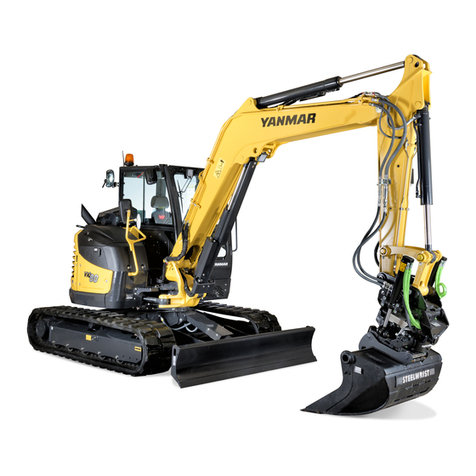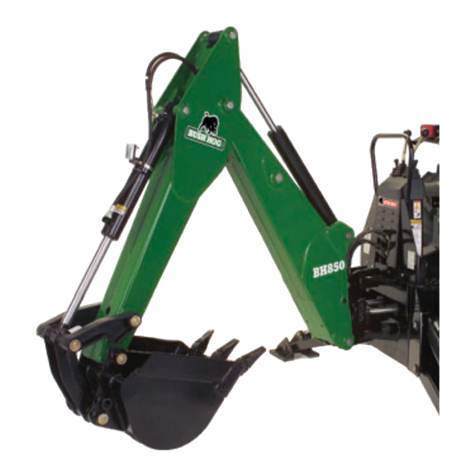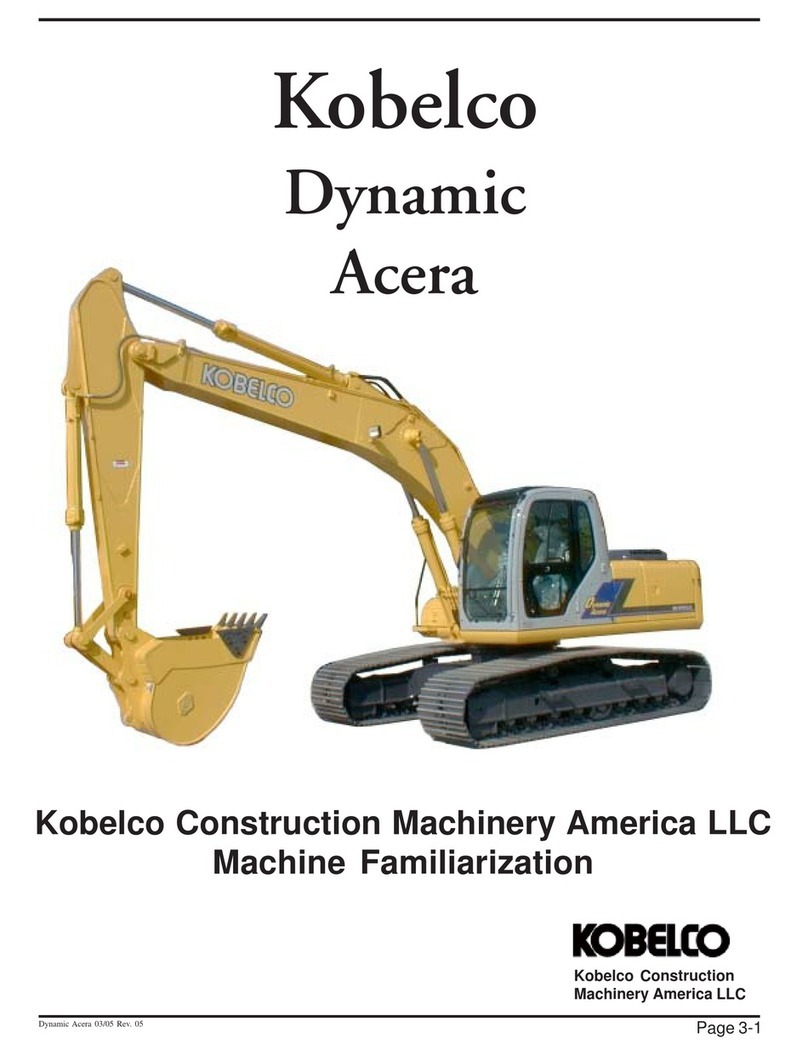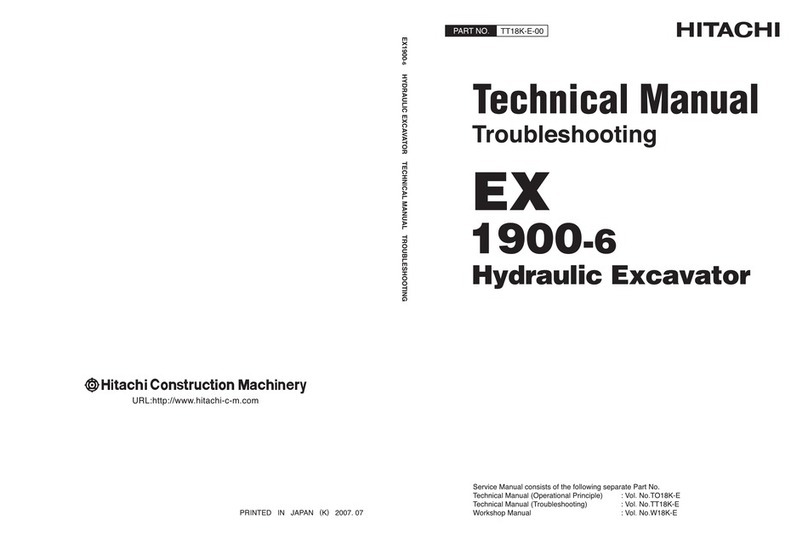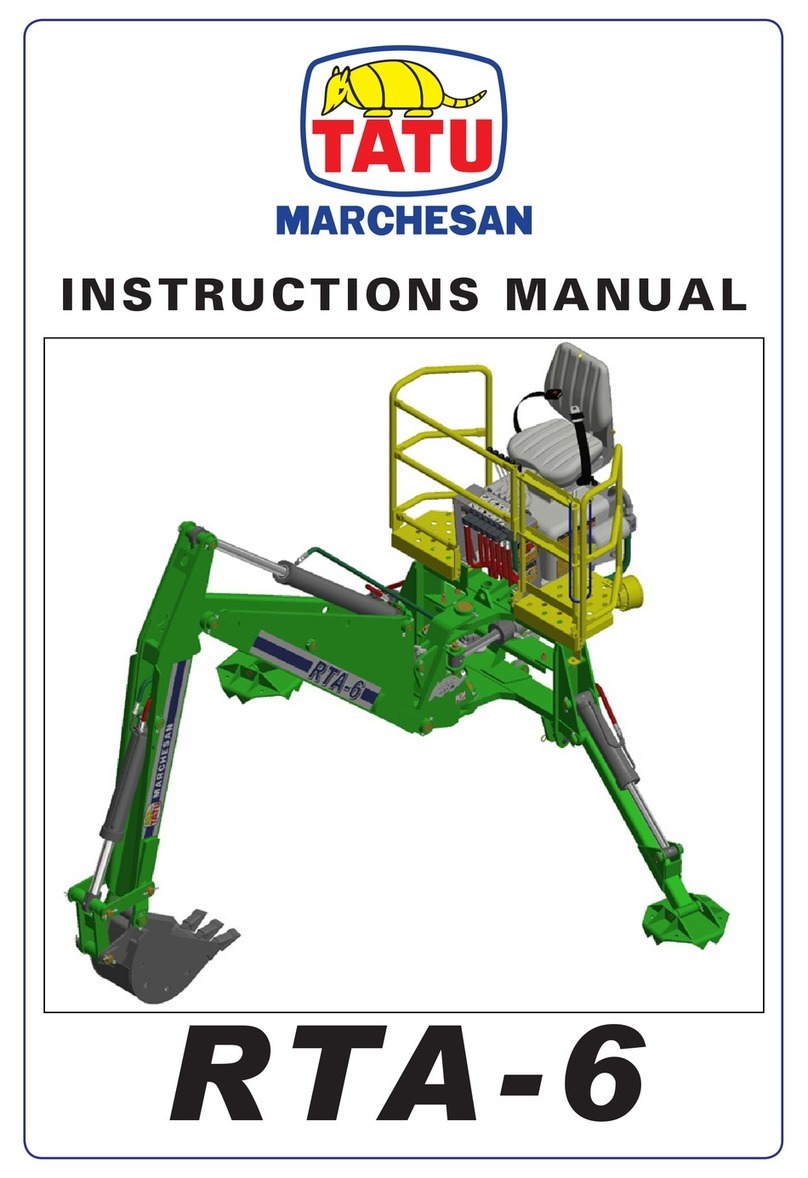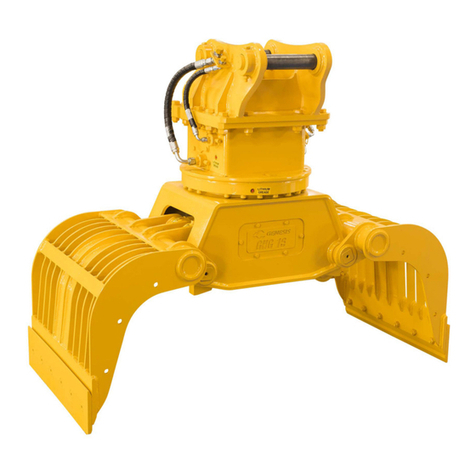EIK AMPHIBIOUS EXCAVATOR Series User manual

www.eikengineering.com
EIK Engineering Sdn. Bhd.
Address : No. 10 (PTD 5749), Jalan SiLC ¼, Kawasan Perindustrian SiLC, 79200 Nusajaya, Johor, Malaysia.
Tel : +607-531 9922
Fax : +607-531 9919
www.eikengineering.com
VER.1.09
Copyright © 2010 by EIK Engineering Sdn Bhd All right reserved
OPERATION MANUAL
AMPHIBIOUS EXCAVATOR SERIES
THIS SHOULD BE KEPT IN MACHINE AT ALL TIMES

www.eikengineering.com
THANK YOU FOR CHOOSING EIK AMPHIBIOUS UNDERCARRIAGE/EXCAVATOR
You are now the owner of an amphibious excavator that is designed and manufactured
by EIK Engineering Sdn. Bhd. that allowed you to carry out excavation activities in soft
terrain, swampy and muddy area. The unique feature of our amphibious excavator is the
undercarriage that has a patented pending technology that leads the industry. The
pontoon is designed with appropriate for variant excavator sizes to ensure that it is able
to float on water as a safety feature.
It is IMPORTANT that you read and observe the information and instruction contained in
this operation manual before using your amphibious undercarriage/excavator for the
first time. It will quickly enable you to become familiar with your excavator and help you
to assess potential hazard to yourself and to the machine while operating the EIK
amphibious undercarriage/excavator.
Failure to observe or adhere to operation safety notes and procedure may result in
accident and injury and breakdown that may incur loss of costly productive hours.
EIK is not responsible for any damage cause by ignorance of warning sign and failure to
observe and adhere to operation safety. This machine must be operated by qualified
operator with normal excavator license certified by local government.
The warranty term and condition or claims can be referred to EIK Engineering Product
Warranty Certificate.
We trust you derive great return on your investment with EIK amphibious
undercarriage/excavator.
Thank You
EIK ENGINEERING SDN BHD

www.eikengineering.com
CONTENT
1 SAFETY OPERATION
Understand Machine Operation 1
Wear Protective Clothing 1
Prepare Safety Equipment 2
Inspect the Machine 2
Inspection and Maintenance 3
Park Machine Safely 3
Operate the Machine with Wider Undercarriage 5
Launching Machine into Open Water 6
Landing the Machine from Open Water 7
Travelling the Machine in Open Water 8
Avoid Water Travelling During Bad Weather Condition 9
Avoid Digging Job in Floatation Mode 10
Digging at Recommended Water Depth 11
Operates the Boom, Stick and Bucket Carefully 13
Avoid Abuse Operation 13
Avoid Hammering Operation 14
Beware of Power Line 14
Travelling the Machine 15
General 15
Land 15
2 UNDERCARRIAGE MAINTENANCE
Track Tension 17
Track Rollers Lubrication 20
Greasing 20
Axle Bearing 20
Hydraulic Cylinder Pin & Bushing 22
Hydraulic Cylinder 23
Hydraulic Travel Motor Gear Oil 24
Spud Pile Winch Hydraulic Motor Gear Oil 25
Wearing Plates 28
Track Parts 29
Pontoon 31
Hydraulic Line 34
3 APPENDIX
Amphibious Undercarriage Maintenance Check List Table 36

www.eikengineering.com
1) SAFETY OPERATION
1.1 Understand Machine Operation
1.1.1 Only qualified operator with understanding and experience should operate the
amphibious excavator. This operation manual must be read carefully and operators
must understand all the contents before operate the amphibious excavator.
1.1.2 Operator must hold normal excavator license certified by local government. Training
must be conducted to inexperience operator before operating the machine.
1.1.3 Learn and remember the location and purpose of all controls, instruments, buttons,
indicator lamps and caution signs.
1.2 Wear Protective Clothing
1.2.1 Wear protective clothing and other safety equipment during machine installation,
operation and maintenance.
Figure 1.1
1.2.2 Prepare lifebelt inside the operator cabin before operating the machine in open water.
Safety life jacket must be worn for safety purpose.
Figure 1.2
1

www.eikengineering.com
1.3 Prepare Safety Equipment
1.3.1 Affix any provided safety sign stickers at the glass panel inside the operator cabin. The
stickers must be in the position where the operator can clearly read.
1.3.2 Fasten a complete first-aid kit and fully charged fire extinguisher at the amphibious
excavator and learn how to use them correctly.
Figure 1.3
1.4 Inspect the Machine
1.4.1 Inspect your machine carefully every time before you use it. Check the base of the
pontoons for damage or cracks. Repair any damage or cracks prior to operation in open
water or swampy area.
1.4.2 Do not start or operate the amphibious excavator before you are in the operator’s seat.
1.4.3 When you are going to operate the machine, ensure that all personnel are away from
the machine.
2

www.eikengineering.com
1.5 Inspection and Maintenance
1.5.1 Stop the engine before inspection or maintenance work.
1.5.2 Use safety sign “under inspection and maintenance” in order to warn the others not to
operate and keep away from the amphibious excavator.
Figure 1.4
1.6 Park Machine Safely
1.6.1 Ensure that you lower the bucket and stop the engine when you are going to park the
machine. Put the control lever in neutral position before you leave the cab.
Figure 1.5
3

www.eikengineering.com
1.6.2 Placed the blocks againt the track if you park the machine on a slope and do not park
the machine with the front attachment pointed the downhill.
Figure 1.6
1.6.3 Remove the engine and cab key with you before leaving the machine.
1.6.4 Do not park your machine on water.
Figure 1.7
4

www.eikengineering.com
1.7 Operate the Machine with Wider Undercarriage
The undercarriage of the amphibious excavator can be set to narrow position as per figure 1.8
and wide position as per figure 1.9, it is compulsory to operate the machine with wider
undercarriage. The undercarriage must be adjusted to the maximum width either manually or
hydraulically before operation. Narrow undercarriage is only applicable for non-operation
application or transportation by trailer.
Figure 1.8
Figure 1.9
5

www.eikengineering.com
1.8 Launching Machine into Open Water
1.7.1 Steep or sudden step or uneven water bed contour may result in machine instability
which could be hazardous during launching.
Figure 1.10
1.7.2 Before launching:
Always examine the water depth and the contour of the water bed to ensure it is
gentle, and with sufficient surface area to accommodate the entire foot print of the
pontoons (undercarriage).
Figure 1.11
6

www.eikengineering.com
Choose a land with slope approximately 10° or less continues down to the the water
until the machine can floats. Prepare the slope if there is no such landscape at your
site.
Lower the front attachment to create a low centre of gravity for the machine which
could stabilze the machine during launching.
Launch the machine tailforemost at a slow speed. Refer to the arrow direction at the
pontoon before launching.
Figure 1.12
1.9 Landing the Machine from Open Water
Lower the front attachment once the front track catches the land during landing. If the track
slips during landing, use the bucket to help your machine escape from water.
Ensure that the front machine is facing to the land during landing.
Figure 1.13
7

www.eikengineering.com
1.10 Travelling the Machine in Open Water
Check and determine that there are no bubles evolving from the pontoons after launching
and before travelling. Ensure that the machine is not abnormally tipping to one side before
proceed with operation.
Figure 1.14
Travel the machine in the direction of arrow at the pontoon and smoothly adjust the front
attachments position, up or down when you want to keep your machine horizontal and
balance.
8

www.eikengineering.com
1.11 Avoid Water Travelling During Bad Weather Condition
Travelling in open water is limited to still water only. Do not travel the machine at the area with
the present of water current, or running stream of water, or the wind is blowing over than
4m/s.
Figure 1.15
9

www.eikengineering.com
1.12 Avoid Digging Job in Floatation Mode
Amphibious excavator is prohibited to work in floatation mode.
Figure 1.16
10

www.eikengineering.com
1.13 Digging at Recommended Water Depth
For safety reason, digging jobs at watery area can only be performed at limited water depth.
Figure 1.17 below illustrates a standard amphibious excavator operates at water depth A and
figure 1.18 illustrates an amphibious excavator operates at water depth B with supplementary
pontoon and spud piles. Refer to Table 1.1 on next page.
Figure 1.17
Figure 1.18
11

www.eikengineering.com
Table 1.1 below shows the recommended water depth for digging purpose for each model of
amphibious excavator produced by EIK®.
MODEL
A, MAX. (METER)
B, MAX. (METER)
AM80
1.1
2.5
AM140
1.2
4.0
AM200, AM250, AM300, AM350
1.5
4.0
Table 1.1
“Supplementary Pontoons (also known as Side Pontoons) and Spud Pile do not eliminate any risk or
operation mishap”.
“Operator is solely responsible for the safe operation of the machine.”
12

www.eikengineering.com
1.14 Operate the Boom, Stick and Bucket Carefully
Carefully operates the machine if a long reach is used as front attachment. Begin and end the
operation with slowly and smoothly. The attachment may collide with the pontoons and cause
severe damage to the structure and will affect the safe operation of the machine.
Figure 1.19
1.15 Avoid Abuse Operation
Do not use travel force as additional digging technique. This operation will exert excessive force
upon the machine structure especially to the front attachments and severe damage may result.
Figure 1.20
13

www.eikengineering.com
1.16 Avoid Hammering Operation
Do not perform hammering and pilling operations using bucket which could cause damage to
the bucket and the front attachments of the machine. Such operations are dangerous and
should be avoided at all circumstances.
Figure 1.21
1.17 Beware of Power Line
Beware of power lines when travelling on land. Lower the long reach attachment if you need to
pass over. Serious injury or death can result from contact with power lines.
Figure 1.22
14

www.eikengineering.com
1.18 Travelling the Machine
1.18.1 General
Check the track chain tension before start the work. Slack track chain may jump
track during steering. Adjust the track chain tension but do not excessively tighten
that would give rise to high travel resistance to the machine.
Before operating the travel levers inside the operator cabin, confirm which direction
the tracks and travel motor are facing. Yellow arrows at the pontoons are directed to
the front side.
1.18.2 Land
Use a flagman when travelling on the shoulder of a road or in confined area.
Travel on flat ground an in straight lines (turn with large angles) as much as possible.
When turning the machine, use alternating forward and reverse movement as much
as possible instead of making one sharp turn.
Avoid a hard travel on land with many stones, rocks and stub as much as possible
that may shorten the track shoes life.
When travelling on rough ground, use low (1st) gear with low engine speed to reduce
the shock to the pontoons and machine.
When ascending or descending slopes, keep the bucket 12 inches (30cm) above the
ground which give you enough time to lower the bucket to the ground immediately
if the machine start to slip.
Figure 1.23
15

www.eikengineering.com
Avoid changing directions on a slope. Otherwise the machine may turn over or
slide sideways.
Figure 1.24
“Operator is solely responsible for the safe operation of the machine.”
“Manufacturer shall not be responsible for any negligence or breach of safety operation procedures.”
16

www.eikengineering.com
2) UNDERCARRIAGE MAINTENANCE
Regular, intervals of proper lubrication and maintenance are essential for long life of the parts and
provide safe operation without drastically loss performance.
This chapter provides correct procedures for lubrication and maintenance for the undercarriage.
2.1 Track Tension
2.1.1 Check the track chain condition before and after travelling the machine. The chain may
come off from the track if it is too slack or loose during steering. Use bolts at track
tension adjuster to adjust the track chain tension but do not over tight the track chain
that would give high travel resistance to the machine.
Figure 2.1
2.1.2 Before the track chain can be adjusted, the mechanic must examine how slack the track
is and what is the suitable tension must be set.
2.1.3 Firstly, ensure that the bottom and the top track chains of the pontoon are in tension or
flat. Use the axle tracking force to get the flat chain on top of the pontoon (turn the
sprockets).
17
This manual suits for next models
6
Table of contents
